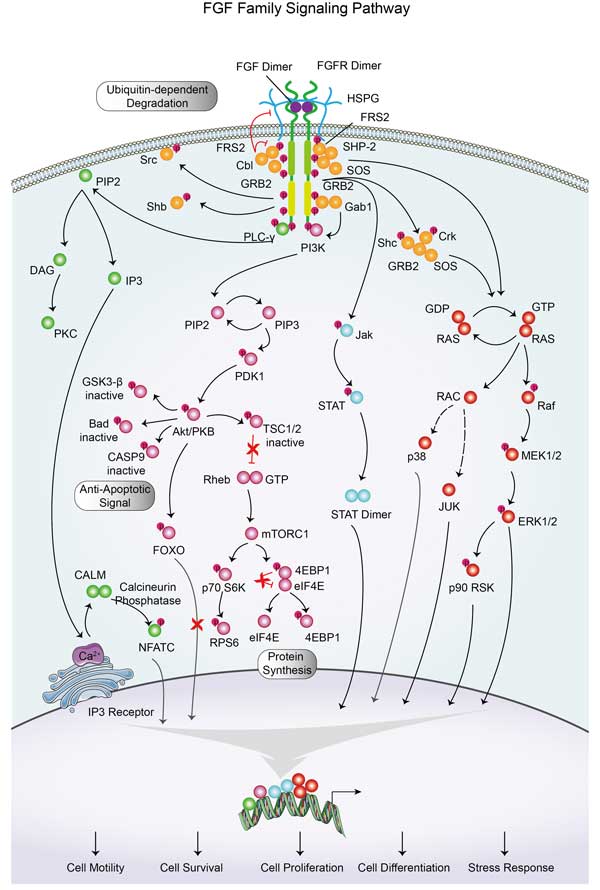PTPN11
-
Official Full Name
protein tyrosine phosphatase, non-receptor type 11 -
Overview
The steady state of protein tyrosyl phosphorylation in cells is regulated by the opposing action of tyrosine kinases and protein tyrosine phosphatases (PTPs). Several groups have independently identified a non-transmembrane PTP, designated SH-PTP1 (also known as PTP1C, HCP and SHP), which is primarily expressed in hematopoietic cells and characterized by the presence of two SH2 domains N-terminal to the PTP domain. A second and much more widely expressed PTP with SH2 domains, SH-PTP2 (also designated PTP1D and Syp), has been identified. -
Synonyms
PTPN11;protein tyrosine phosphatase, non-receptor type 11;Noonan syndrome 1 , NS1;tyrosine-protein phosphatase non-receptor type 11;BPTP3;PTP2C;SH PTP2;SHP 2;SHP2;PTP-2C;protein tyrosine phosphatase-2;protein-tyrosine phosphatase 1D;protein-tyrosine phosphatase 2C;CFC;NS1;PTP-1D;SH-PTP2;SH-PTP3;MGC14433
Recombinant Proteins
- Human
- Rhesus macaque
- Rat
- Chicken
- Mouse
- E.coli
- Sf9 Cells
- Mammalian Cells
- HEK293
- Human Cells
- GST
- His
- Non
- Avi
- Fc
- DDK
- Myc
Background
What is PTPN11 protein?
PTPN11 gene (protein tyrosine phosphatase non-receptor type 11) is a protein coding gene which situated on the long arm of chromosome 12 at locus 12q24. The protein encoded by this gene is a member of the protein tyrosine phosphatase (PTP) family. PTPs are known to be signaling molecules that regulate a variety of cellular processes including cell growth, differentiation, mitotic cycle, and oncogenic transformation. This PTP contains two tandem Src homology-2 domains, which function as phospho-tyrosine binding domains and mediate the interaction of this PTP with its substrates. The PTPN11 protein is consisted of 593 amino acids and PTPN11 molecular weight is approximately 68.0 kDa.
What is the function of PTPN11 protein?
The PTPN11 protein, also known as SHP-2, is a non-receptor type protein tyrosine phosphatase that plays a critical role in regulating various cellular processes including cell growth, differentiation, mitotic cycle, and oncogenic transformation. It is widely expressed across tissues and is involved in cell signaling events that are essential for functions such as mitogenic activation, metabolic control, transcription regulation, and cell migration. Mutations in the PTPN11 gene can lead to conditions like Noonan syndrome and juvenile myelomonocytic leukemia, highlighting its importance in both developmental and disease contexts.
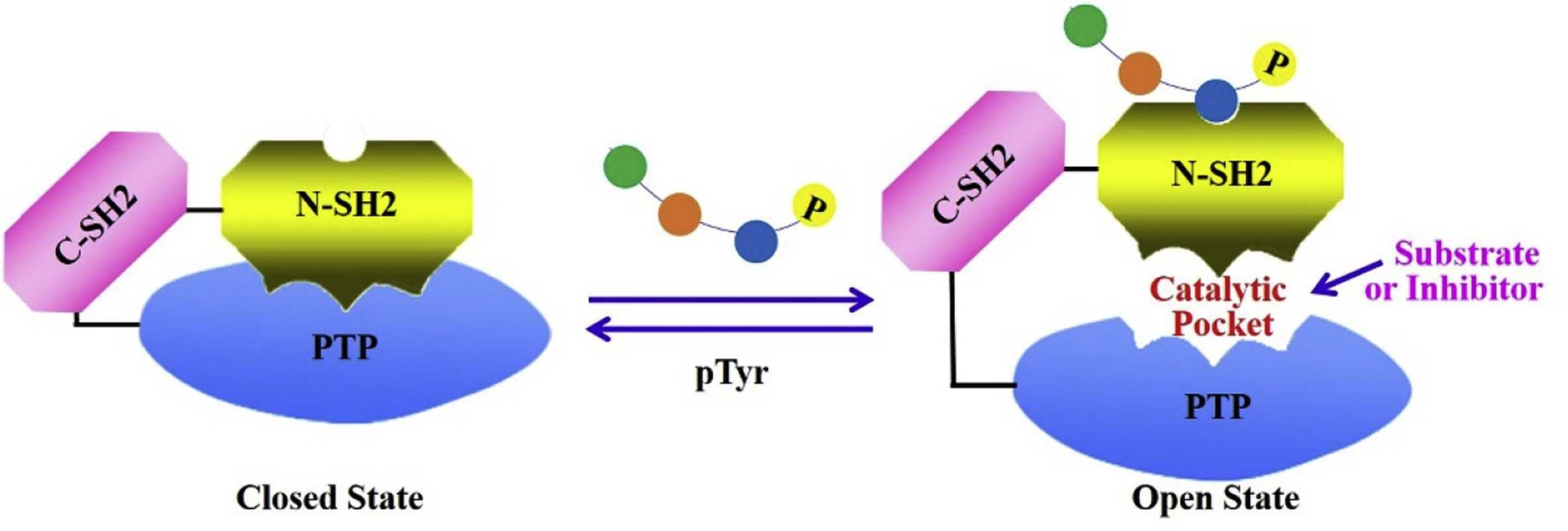
Fig1. The mechanism of SHP2: in the basal state, the intramolecular inhibition between N-SH2 and PTP domains maintains SHP2 in a closed state. (Dadong Shen, 2020)
PTPN11 related signaling pathway
The PTPN11-related signaling pathway involves a tyrosine phosphatase, PTPN11 (also known as SHP2), which plays a critical role in modulating various cellular processes including cell growth, differentiation, and survival. It acts primarily by dephosphorylating specific tyrosine residues on its substrates, thereby regulating the activity of downstream effectors such as the RAS/MAPK and PI3K/AKT pathways. Mutations in PTPN11 are associated with several developmental disorders and cancers, highlighting its importance in maintaining proper signal transduction and cellular homeostasis.
PTPN11 related diseases
The PTPN11 protein, encoding the SHP-2 tyrosine phosphatase, plays a crucial role in signal transduction pathways that regulate cell growth, differentiation, and oncogenic transformation. Mutations in the PTPN11 gene are associated with an increased risk of developing conditions such as Noonan syndrome, juvenile myelomonocytic leukemia (JMML), and various solid tumors including lung and colorectal cancer. Furthermore, SHP-2 has been implicated in the pathogenesis of diseases involving chronic inflammation, suggesting its potential as a therapeutic target for conditions like inflammatory bowel disease and certain cancers.
Bioapplications of PTPN11
The bioapplications of PTPN11, a protein tyrosine phosphatase, are primarily focused on its role in various signaling pathways that regulate cell growth, differentiation, and survival. Due to its involvement in these critical cellular processes, PTPN11 is a target for therapeutic intervention in numerous diseases, including cancers and developmental disorders. Research efforts are directed towards understanding the mechanisms by which PTPN11 modulates signal transduction and identifying specific mutations that contribute to disease pathogenesis. This knowledge is instrumental in developing targeted therapies and diagnostic tools to improve patient outcomes.
Case Study
Case Study 1: Sumit Bhattacharyya, 2018
Epidermal growth factor receptor (EGFR) plays a key role in cellular processes and cancer development, and its expression is upregulated when arylsulfatase B (ARSB) is reduced. ARSB, which trims 4-sulfate groups from dermatan sulfate and chondroitin 4-sulfate (C4S), is linked to the inhibition of protein-tyrosine phosphatase SHP2. Here SHP2 prefers binding C4S and that ARSB silencing leads to decreased SHP2 activity and increased EGFR expression in prostate cells. This increase is triggered by reduced SHP2 activity, heightened JNK activity, and enhanced DNA binding by c-Jun and c-Fos, culminating in EGFR promoter activation. Exogenous EGF further promotes cell proliferation. These insights suggest that targeting ARSB and C4S could be a therapeutic strategy for EGFR-driven cancers.
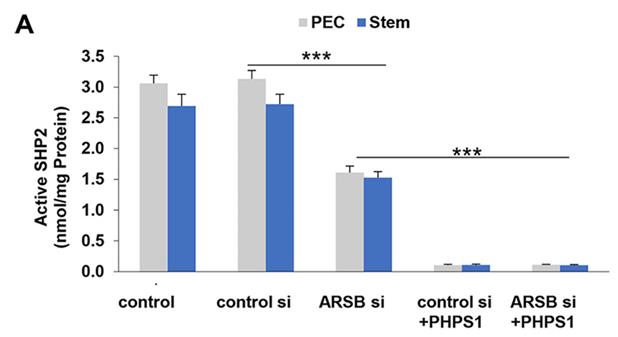
Fig1. active SHP2 was measured using an exogenous phosphorylated substrate in the prostate stem and epithelial cells.
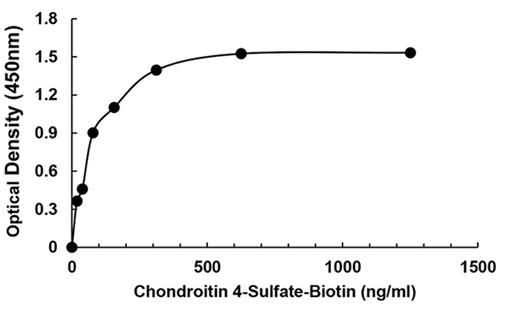
Fig2. Binding of biotinylated, predominantly C4S chondroitin sulfate to GST-tagged SHP2.
Case Study 2: Robert D Bongard, 2017
Protein tyrosine phosphatases (PTPs), like DUSP5 and PTP1B, are key targets for treating cancer, diabetes, and vascular diseases, but developing effective inhibitors is challenging, resulting in few approved drugs. This research identified an inhibitor of DUSP5 through NCI compound docking and enzyme inhibition assays. Further analysis showed the inhibitor's potency increased over time, correlating with a color change due to dimer formation upon light and oxygen exposure. The dimeric form was a more potent inhibitor of PTP1B, with an IC50 of 2.1 μM, and was 18-fold more selective for PTP1B than DUSP5. This discovery highlights the importance of compound re-synthesis and verification in drug screening.
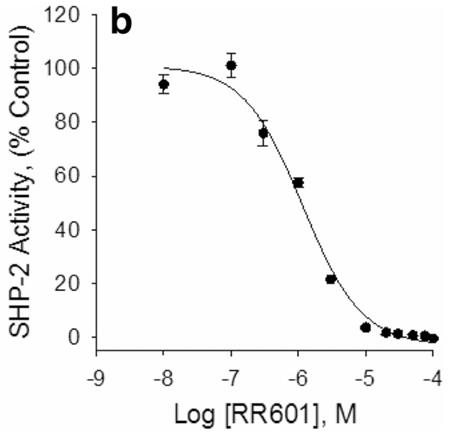
Fig3. Activity was monitored utilizing pNPP as the substrate.
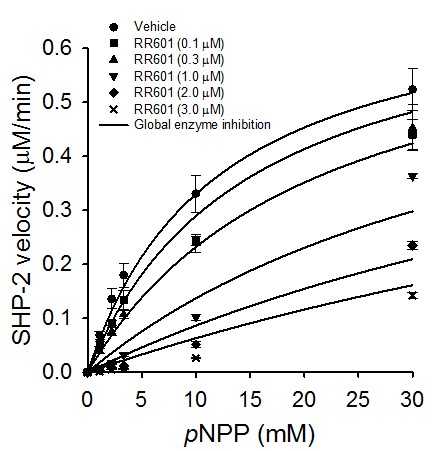
Fig4. Global non-linear regression fit for competitive inhibition of SHP-2 with RR601.
Quality Guarantee
High Purity
.jpg)
Fig1. SDS-PAGE (PTPN11-31402TH)
.
.jpg)
Fig2. SDS-PAGE (PTPN11-4533H)
Involved Pathway
PTPN11 involved in several pathways and played different roles in them. We selected most pathways PTPN11 participated on our site, such as Ras signaling pathway,Phospholipase D signaling pathway,Jak-STAT signaling pathway, which may be useful for your reference. Also, other proteins which involved in the same pathway with PTPN11 were listed below. Creative BioMart supplied nearly all the proteins listed, you can search them on our site.
| Pathway Name | Pathway Related Protein |
|---|---|
| Neurotrophin signaling pathway | ATF4,PIK3CA,SH2B3,CALM1,KRAS,NGFRAP1,PSEN1,CAMK2D,TP73,ARHGDIB |
| Proteoglycans in cancer | MAP2K1,PIK3R3,PRKACG,PRKACB,Casp3,ROCK2,PTPN6,ARAF,ITGB1,ERBB3 |
| Epithelial cell signaling in Helicobacter pylori infection | ATP6V1F,IKBKG,ATP6V0C,ATP6V1A,TJP1,ATP6V1G1,MAPK12,TCIRG1,RELA,ATP6V0D1 |
| Adipocytokine signaling pathway | NFKB1,TNFRSF1A,NFKBIE,PTPN11A,PRKAG2A,CPT1B,TRAF2,NFKBIAB,TNFRSF1B,JAK2A |
| Herpes simplex infection | C1QBP,Fasl,HLA-DQA2,EIF2AK4,CASP3B,EIF2AK3,TRAF2,CFP,MAPK8,MAPK9 |
| Natural killer cell mediated cytotoxicity | FCGR4,Raet1c,Casp3,SHC4,PLCG2,ULBP2,KLRC4-KLRK1,MAPK3,KIR2DS2,MICA |
| Leukocyte transendothelial migration | ITGAL,ARHGAP5,CYBB,PIK3R5,RAP1B,PRKCG,MYL5,Itgam&Itgb2,MYLPF,RHOH |
| Chronic myeloid leukemia | HDAC2,SHC3,RUNX1,GRB2,CRK,STAT5A,RAF1,NFKBIA,CBL,HDAC1 |
| Jak-STAT signaling pathway | IL13RA2,CISHB,BCL2A,SOCS4,IL11RA2,CNTFR,IL19,Il23a,AKT2,IL12RB1 |
Protein Function
PTPN11 has several biochemical functions, for example, D1 dopamine receptor binding,SH3/SH2 adaptor activity,insulin receptor binding. Some of the functions are cooperated with other proteins, some of the functions could acted by PTPN11 itself. We selected most functions PTPN11 had, and list some proteins which have the same functions with PTPN11. You can find most of the proteins on our site.
| Function | Related Protein |
|---|---|
| protein tyrosine phosphatase activity | PALD1,DUSP3B,EYA1,DUSP6,DUSP12,PTPN23,PTPN4B,PTPN9,PTPN14,DUSP15 |
| D1 dopamine receptor binding | DLG4,DRD3,GNAS,AGTR1A,CAV2,ATP1A3,ARRB2 |
| protein binding | VDAC2,FBXL14,MXD1,C19orf80,ANKRD32,ZNF259,URM1,PLAT,PINK1,C1D |
| insulin receptor substrate binding | PIK3R1,IGF1R,IGF1RA,IGF1RB,INSRR,PIK3CA,JAK2,PRKCZ,INSR,INSRB |
| receptor tyrosine kinase binding | ANGPT1,PTPN2,PITPNM3,ELMO2,PCNA,ARHGEF16,PLCG1,PTPN14,ANXA5,PTPN1 |
| phospholipase binding | CALM,SNCA,NEFL,PRKCZ,LMNB1,SELE,SERPINB1A,APOC2,CALM1,ARHGAP6 |
| non-membrane spanning protein tyrosine phosphatase activity | PTPN12,ACP1,PTPN4,DUSP1,PTPN9,PTPN18 |
| peptide hormone receptor binding | ADCYAP1,NPPA,PTHLH,RUNDC3A,PTH,JAK2,PTHLHA,NPPC,FYN,LEP |
| insulin receptor binding | SNX4,DOK3,PHIP,SNX1,FRS2A,SLC2A2,INS1,INSL3,IGF1R,IRS1 |
Interacting Protein
PTPN11 has direct interactions with proteins and molecules. Those interactions were detected by several methods such as yeast two hybrid, co-IP, pull-down and so on. We selected proteins and molecules interacted with PTPN11 here. Most of them are supplied by our site. Hope this information will be useful for your research of PTPN11.
GAB1
PTPN11 Related Signal Pathway
Resources
Research Area
ITIM/ITAM Immunoreceptors and Related MoleculesPhosphatases and Regulators
Repulsive Guidance Molecules and Receptors
Phosphatases in the Akt Pathway
Transcription Factors in the Akt Pathway
Cancer Stem Cell Transcription Factors
Epithelial Stem Cell Transcription Factors
Adherens Junction Proteins in Endothelial Cells
Adherens Junction Proteins in VSMC
Intracellular Signaling Molecules in Angiogenesis
Mesenchymal to Epithelial Transition
C-type Lectin Receptors
Phosphatases Localized to Focal Adhesions
Related Services
Related Products
References
- Bader-Meunier, B; Cave, H; et al. Are RASopathies new monogenic predisposing conditions to the development of systemic lupus erythematosus? Case report and systematic review of the literature. SEMINARS IN ARTHRITIS AND RHEUMATISM 43:217-219(2013).
- Jiang, J; Jin, MS; et al. Increased expression of tyrosine phosphatase SHP-2 in Helicobacter pylori-infected gastric cancer. WORLD JOURNAL OF GASTROENTEROLOGY 19:575-580(2013).


